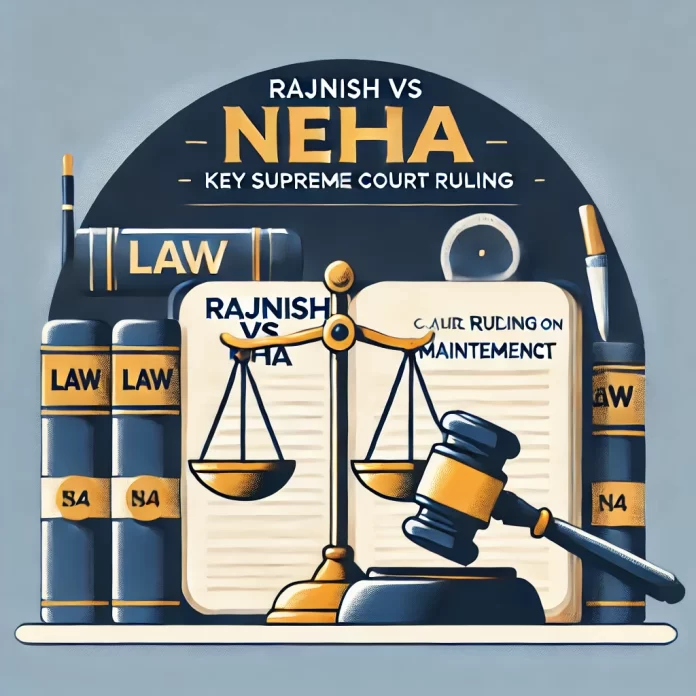The Supreme Court of India’s decision in Rajnish vs. Neha (2020) addressed critical aspects of maintenance in matrimonial disputes, establishing comprehensive guidelines for determining interim and permanent alimony.
Key Facts:
Parties Involved: Rajnish (appellant) and Neha (respondent) were married in 2012 and have a minor child.
Background: Neha left the matrimonial home in January 2013, shortly after their child’s birth. In 2015, the Family Court ordered Rajnish to pay Rs. 15,000 per month to Neha and Rs. 5,000 per month for their son. The Bombay High Court upheld this order in 2018.
Appeal: Rajnish appealed the High Court’s decision, leading to the Supreme Court’s intervention.
Supreme Court’s Rulings:
- Overlapping Jurisdictions: The Court acknowledged the existence of multiple statutes—such as the Criminal Procedure Code (Cr.P.C.), Hindu Marriage Act (HMA), Hindu Adoptions and Maintenance Act (HAMA), and Protection of Women from Domestic Violence Act (DV Act)—that provide for maintenance. It emphasized the need to streamline proceedings to prevent conflicting orders and overlapping jurisdictions.
- Interim Maintenance: The Court mandated that both parties file an “Affidavit of Disclosure of Assets and Liabilities” to ensure transparency in financial matters. This affidavit is crucial for determining the interim maintenance amount.
- Criteria for Determining Maintenance: The Court outlined factors to be considered when determining the quantum of maintenance:
Status of the Parties: The social and economic standing of both spouses.
Reasonable Needs: The legitimate needs of the wife and dependent children.
Education and Qualifications: Whether the applicant is educated and professionally qualified.
Independent Income: Whether the applicant has any independent source of income.
Standard of Living: Whether the income is sufficient to maintain the same standard of living as in the matrimonial home.
Employment History: Whether the applicant was employed prior to or during the marriage.
Sacrifice of Career: Whether the wife sacrificed employment opportunities for family responsibilities.
Litigation Costs: Reasonable costs of litigation for a non-working wife.
Financial Capacity of the Husband: The husband’s actual income and financial capacity.
Inflation and Living Costs: Consideration of rising inflation rates and high costs of living.
Dependents: Reasonable expenses for the husband’s own maintenance and dependent family members.
- Date from Which Maintenance is Awarded: The Court directed that maintenance should be awarded from the date of filing the application, ensuring timely support for the dependent spouse and children.
- Enforcement of Maintenance Orders: The Court specified that maintenance orders can be enforced under various provisions, including Section 28A of the HMA, Section 20(6) of the DV Act, and Section 128 of the Cr.P.C. These orders may be enforced as a money decree of a civil court under the Civil Procedure Code.
Conclusion:
The Rajnish vs. Neha judgment provides a structured framework for determining maintenance in matrimonial disputes, emphasizing transparency, fairness, and the timely provision of support to dependent spouses and children. By considering a comprehensive set of factors, the Court aims to ensure that maintenance awards are just and reflective of the parties’ circumstances.
